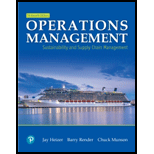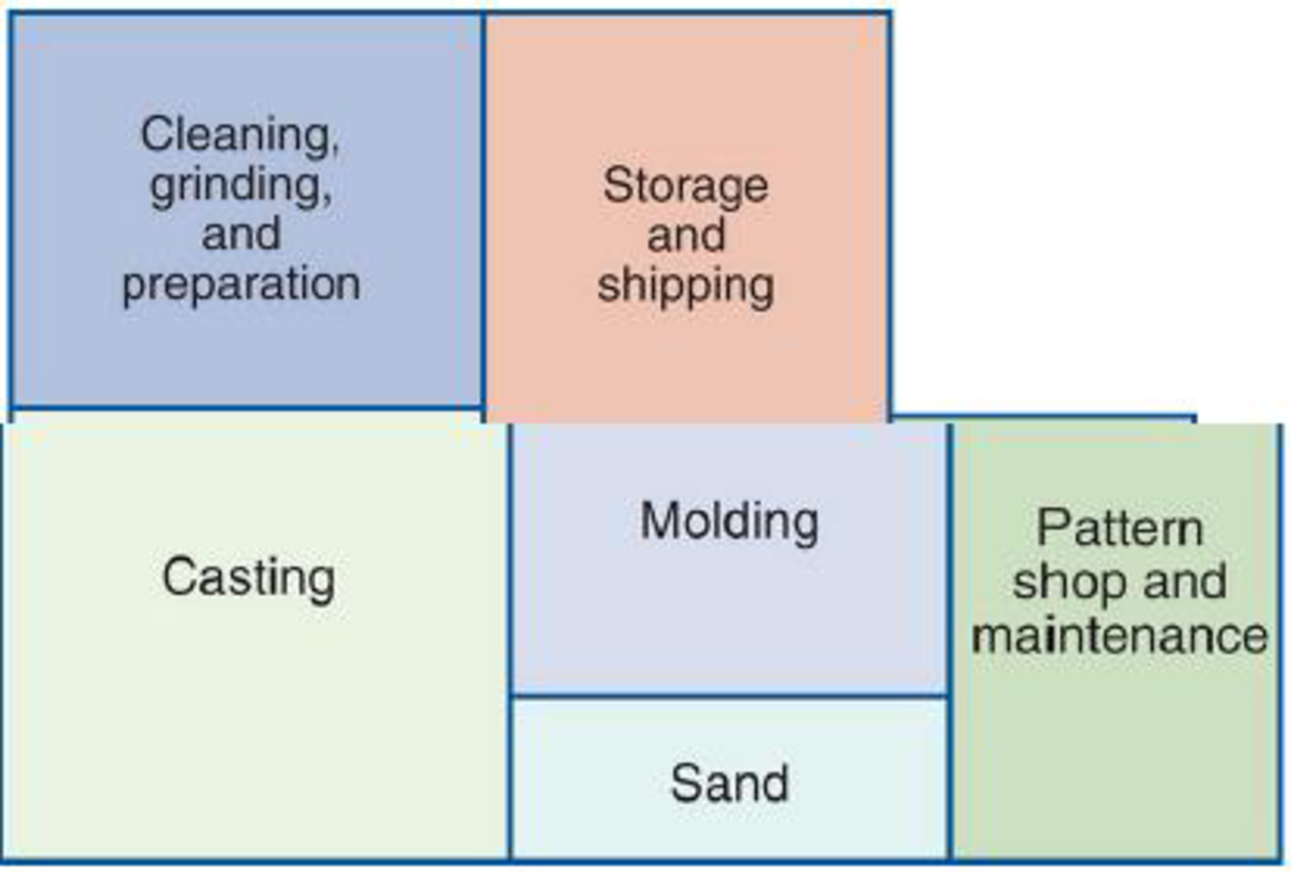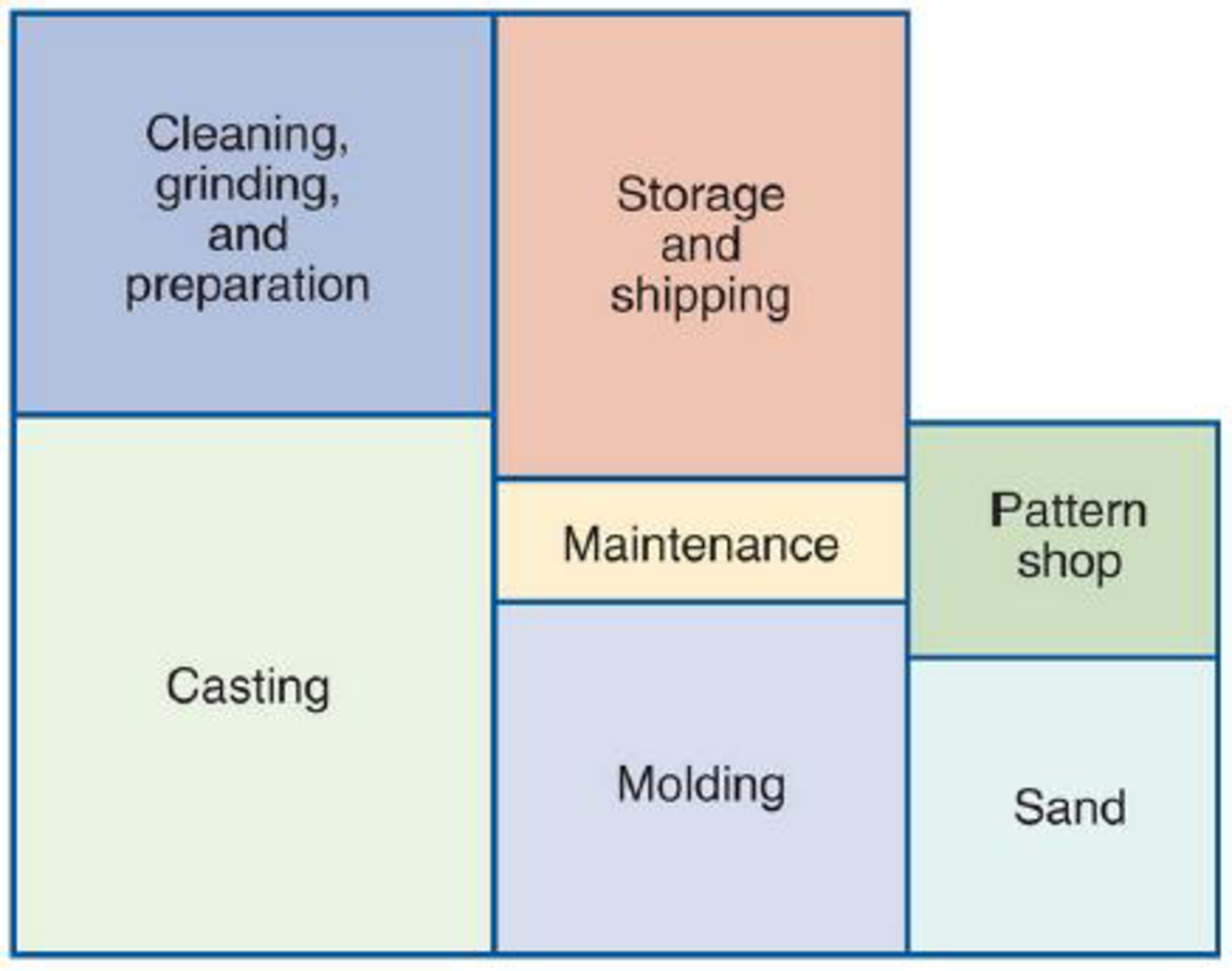
Concept explainers
New England Foundry
For more than 75 years, New England Foundry, Inc., (NEFI), has manufactured wood stoves for home use. In recent years, with increasing energy prices, President George Mathison has seen sales triple. This dramatic increase has made it difficult for George to maintain quality in all his wood stoves and related products.
Unlike other companies manufacturing wood stoves, NEFI is in the business of making only stoves and stove-related products. Its major products are the Warmglo I, the Warmglo II, the Warmglo III, and the Warmglo IV. The Warmglo I is the smallest wood stove, with a heat output of 30,000 BTUs, and the Warmglo IV is the largest, with a heat output of 60,000 BTUs.
The Warmglo III outsold all other models by a wide margin. Its heat output and available accessories were ideal for the typical home. The Warmglo III also had a number of other outstanding features that made it one of the most attractive and heat-efficient stoves on the market. These features, along with the accessories, resulted in expanding sales and prompted George to build a new factory to manufacture the Warmglo III model. An overview diagram of the factory is shown in Figure D.6.

Figure D.6 Overview of Factory
The new foundry used the latest equipment, including a new Disamatic that helped in manufacturing stove parts. Regardless of new equipment or procedures, casting operations have remained basically unchanged for hundreds of years. To begin with, a wooden pattern is made for every cast-iron piece in the stove. The wooden pattern is an exact duplicate of the cast-iron piece that is to be manufactured. All NEFI patterns are made by Precision Patterns, Inc. and are stored in the pattern shop and maintenance room. Next, a specially formulated sand is molded around the wooden pattern. There can be two or more sand molds for each pattern. The sand is mixed and the molds are made in the molding room. When the wooden pattern is removed, the resulting sand molds form a negative image of the desired casting.
Next, molds are transported to the casting room, where molten iron is poured into them and allowed to cool. When the iron has solidified, molds are moved into the cleaning, grinding, and preparation room, where they are dumped into large vibrators that shake most of the sand from the casting. The rough castings are then subjected to both sandblasting to remove the rest of the sand and grinding to finish some of their surfaces. Castings are then painted with a special heat-resistant paint, assembled into workable stoves, and inspected for manufacturing defects that may have gone undetected. Finally, finished stoves are moved to storage and shipping, where they are packaged and transported to the appropriate locations.
At present, the pattern shop and the maintenance department are located in the same room. One large counter is used by both maintenance personnel, who store tools and parts (which are mainly used by the casting department), and sand molders, who need various patterns for the molding operation. Pete Nawler and Bob Dillman, who work behind the counter, can service a total of 10 people per hour (about 5 per hour each). On average, 4 people from casting and 3 from molding arrive at the counter each hour. People from molding and casting departments arrive randomly, and to be served, 1hey form a single line.
Pete and Bob have always had a policy of first come, first served. Because of the location of the pattern shop and maintenance department, it takes an average of 3 minutes for an individual from the casting department to walk to the pattern and maintenance room, and it takes about 1 minute for an individual to walk from the molding department to the pattern and maintenance room.
After observing the operation of the pattern shop and maintenance room for several weeks, George decided to make some changes to the factory layout. An overview of these changes appears in Figure D.7.

Figure D.7 Overview of Factory after Changes
Separating the maintenance shop from the pattern shop would have a number of advantages. It would take people from the casting department only 1 minute instead of 3 to get to the new maintenance room. The time from molding to the pattern shop would be unchanged. Using motion and time studies, George was also able to determine that improving the layout of the maintenance room would allow Bob to serve 6 people from the casting department per hour; improving the layout of the pattern department would allow Pete to serve 7 people from the molding shop per hour.
3. Should George have made the change in layout?
Want to see the full answer?
Check out a sample textbook solution
Chapter D Solutions
Mylab Operations Management With Pearson Etext -- Access Card -- For Operations Management: Sustainability And Supply Chain Management (13th Edition)
- Background: Data about the frequency of adverse events related to inappropriate care in hospitals come from studies of medical records as if they represented a true record of adverse events. In a prospective, observational design we analyzed discussion of adverse events during the care of all patients admitted to three units of a large, urban teaching hospital affiliated to a university medical school. Discussion took place during routine clinical meetings. We undertook the study to enhance understanding of the incidence and scope of adverse events as a basis for preventing themMethods: Ethnographers trained in qualitative observational research attended dayshift, weekday, regularly scheduled attending rounds, residents' work rounds, nursing shift changes, case conferences, and other scheduled meetings in three study units as well as various departmental and section meetings. They recorded all adverse events during patient care discussed at these meetings and developed a classification…arrow_forwardBackground: Data about the frequency of adverse events related to inappropriate care in hospitals come from studies of medical records as if they represented a true record of adverse events. In a prospective, observational design we analyzed discussion of adverse events during the care of all patients admitted to three units of a large, urban teaching hospital affiliated to a university medical school. Discussion took place during routine clinical meetings. We undertook the study to enhance understanding of the incidence and scope of adverse events as a basis for preventing them Methods: Ethnographers trained in qualitative observational research attended dayshift, weekday, regularly scheduled attending rounds, residents' work rounds, nursing shift changes, case conferences, and other scheduled meetings in three study units as well as various departmental and section meetings. They recorded all adverse events during patient care discussed at these meetings and developed a…arrow_forwardProblem 6-2 (Algo) Rachel loves to bake cookies, but she has an old oven that has trouble maintaining a constant temperature. If the acceptable temperature range for making the cookies is 350 plus or minus 10 degrees, what is the allowable standard deviation in the temperature of her oven in order to achieve a Six Sigma level of quality? Note: Round your answer to 3 decimal places. Standard deviation degreesarrow_forward
- Volumetric Glassware: Utility and Calibration (Dry Lab) Table B1: Calculation of a 100-mL Volumetric Flask. temperature of the Distilled H2O (°C) 27 density of distilled H2O at calibration temperature mass (g) of volumetric flask + distilled H₂O Trial 1 198.5893 Trial 2 198.6114 Trial 3 mass (g) of dry volumetric flask 98.6563 98.7503 198.6001 98.7145 mass (g) of distilled H₂O m true g calculated volume of water dispensed, cm³ corrected volume, V20 °c, cm³ average corrected volume, V20 °C, cm³ standard deviation (4 sig figs) %RSD (2 sig figs)arrow_forwardA Lighting company seeks to study the percentage of the defective glass shells being manufactured. Theoretically, the percentage of defectives is dependent on temperature, humidity, and the level of artisan expertise. Complete historical data are available for the following variables on a daily basis for a year.a. Temperature (high, normal, low)b. Humidity (high, normal, low)c. Artisan expertise (expert, average, mediocre)Some experts feel that defectives also depend on productive supervisors. However, data on supervisors in charge are available for only 242 of the 365 days. How should you conduct this study?arrow_forward17. Services differ from manufactured products in four ways. Intangibility, Inseparability, Perishability and ? A. Homogeneity B. Heterogeneity C. Intractability D. Invisibility E. None of the above 18. The implications of low volume production include the following except a) Low unit cost b) Less systematization c) Low repetition d) Each staff performs more of jobs e) None of the abovearrow_forward
- Tombro Industries is automating one of its plants and developing a flexible manufacturing system. In an effort to revise its performance measurement system, the company gathered the following data for the last four months: Quality control measures: Number of defects Number of warranty claims Number of customer complaints Material control measures: Purchase order lead time Scrap as a percent of total cost Machine performance measures: Machine downtime as a percentage of availability Use as a percentage of availability Setup time (hours) Delivery performance measures: Throughput time Manufacturing cycle efficiency (MCE) Delivery cycle time Percentage of on-time deliveries Month 1 2 3 4 191 169 130 91 52 45 36 33 108 102 85 64 10 days 9 days 7 days 5 days 2% 2% 3% 6% 5% 6% 6% 10% 95% 92% 89% 85% 10 12 13 14 ? ? ? ? ? ? ? ? ? ? 96% 95% ? 92% ? 89% The president read in industry journals that throughput time, MCE, and delivery cycle time are important measures of performance, but no one is…arrow_forwardDetermine how TCAS have played a role in a flight safety without any support from air traffic controllers in the ground stations by analyzing the function of its componentsarrow_forwardRacks Company has developed the following standards for one of its products: Direct materials 12 kilograms @ $14 per kg Direct labour 3 hours @ $18 per hour Variable overhead 3 hours @ $ 8 per hour The following activities occurred during the month of October: Materials purchased 10,000 kilograms at $13.60 per kg Materials used 9,000 kilograms Units produced 800 units Direct labour 2,500 hours at $19.00 per hour Actual variable overhead $22,000 The company records materials price variances at the time of purchase. Racks Company's materials price variance would be Racks Company's materials usage variance would be Racks Company's labour rate variance would be Racks Company's labour efficiency variance would be Who would NOT be responsible for an unfavourable material usage variance caused by poor quality material?arrow_forward
- Relevant Costs and Quality Improvement Lightening Bulk Company is a moving companyspecializing in transporting large items worldwide. The firm has an 85% on-time delivery rate.Thirteen percent of the items are misplaced and the remaining 2% are lost in shipping. On average,the firm incurs an additional $65 per item to track down and deliver misplaced items. Lost items costthe firm about $300 per item. Last year, the firm shipped 6,000 items with an average freight bill of$200 per item shipped.The firm’s manager is considering investing in a new scheduling and tracking system costing$125,000 per year. The new system is expected to reduce misplaced items to 1% and lost items to0.5%. Furthermore, the firm expects total sales to increase by 10% with the improved service. Theaverage contribution margin ratio on any increased sales volume, after cost savings associated witha reduction in misplaced and lost items, is expected to be 37.5%.Required1. Based on a relevant cost analysis, should…arrow_forwardIn a car manufacturing company, an automated painting process has been introduced, and the quality assurance team suspects there might be issues that require investigation. The team decides to conduct a root cause analysis to identify potential problems. Through the root cause analysis and further investigation, it appears that the drying time of the paint in minutes is affecting the overall quality of the finish. The aspect they need to examine is the variation in drying time across different colours of paint. Considering the ongoing concerns in the painting process, the team chooses to collect a sample of six drying time measurements every 20 minutes from various colours of paint. The recorded drying time values for a day's production are presented in Table 1. A total of 10 sets of measurements, each consisting of six drying time values in minutes, have been collected. Each time a set of measurements is taken, the individual drying time values are recorded. Table 1: Drying Time…arrow_forwardQuality management is the process of ensuring that products or services meet or exceed customer expectations. It involves identifying quality standards, establishing processes to meet those standards, and continuously monitoring and improving performance. Quality management encompasses various methodologies and tools, such as Total Quality Management (TQM), Six Sigma, and Lean Management, to enhance efficiency and effectiveness while minimizing defects and errors. Key components of quality management include quality planning, quality control, quality assurance, and continuous improvement. By prioritizing quality throughout all stages of production or service delivery, organizations can enhance customer satisfaction, build brand reputation, and achieve sustainable success in the marketplace. Question: How does implementing quality management principles contribute to reducing costs and improving profitability for organizations?arrow_forward
